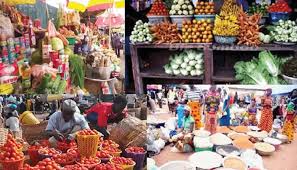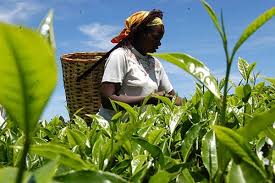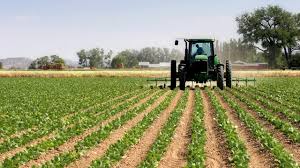In general, agriculture is a basic and strategic sector of the national economy; therefore, the need for an explicit study of agricultural policy easily becomes apparent. Agricultural policies can be classified in several ways, depending on their objectives, the instruments used, and the commodity system they are primarily focused on.
The three broad groups that agricultural policies are classified into by the government are price policies, structural policies, and marketing policies.
Read Also: How to use Super Gro for crop farming
Types and Analysis of Agricultural Policies

Markets and production methods sometimes lag behind the requirements of the time, and in the absence of intervention, farmers are subject to low and fluctuating incomes.
In developed countries, there is a tendency for rapid technology advancement to cause production to rise faster than demand, which leads to low prices and income.
At the same time, the biological nature of agriculture leads to unplanned fluctuations in production, which causes sharp fluctuations in price and, hence, farmers’ incomes. In many developing countries, on the other hand, the problem is that agricultural production lags behind requirements.
To deal with these problems, governments have policies in agriculture that can be divided into three main groups: price policies, structural policies, and marketing policies.
Price Policies
Agricultural price policy is common with prices that farmers receive for their products (the farm gate price) and the prices at other stages in the distribution chain. Attention is generally focused on farm gate prices, and the individual policies are generally concerned with stabilizing and frequently raising them.
Agricultural price policies can be pursued either nationally or internationally. National policies have used many methods, such as tariffs or variable levies on imports, import quotas, subsidies, support buying, production control, statutory marketing organizations, and various combinations of these.
Policies of these types, which are generally protectionist in their effort, are not confined to agricultural products alone. Many countries give protection to manufactured products. In most developing countries today, however, the protection given to agriculture is more comprehensive than that given to most industries.
Objectives of Price Policies

In principle, price policies could be aimed at:
- Increasing prices
- Decreasing prices
- Stabilizing prices
The objectives are always related to more general economic growth and income distribution objectives, which can be reached by a combination of different instruments in different markets.
Structural Policies
Structural policies are those designed to improve the structure of agricultural production, i.e. the size, layout, and equipment of farms, as well as rural infrastructure, electricity and water supplies, educational and advisory services, and, in a broad sense, social facilities in the countryside.
Marketing Policies
Marketing policies are concerned with changes in the distribution chains between farmers and consumers. The objective may be to strengthen the farmers’ bargaining position by, for example, encouraging the development of producer-controlled marketing organizations, improving hygiene and quality, or reducing the cost of marketing.
Analysis of Specific Agricultural Policies
Agricultural policies can be classified in several ways, depending on their objectives, the instruments used, and the commodity system they are primarily focused on. The classification suggested by Norton (2002) classifies policies into three categories:
1. Policies that affect producers’ incentives, which include:
i. Output price policies
ii. Trade and exchange rate policies
iii. Other policies that influence incentives
2. Policies that grant producers access to resources, among which we can identify:
i. Food policy and food security
ii. Land tenure policies
iii. Water access policies and irrigation
iv. Agricultural technology policies
3. Policies that influence access to factors markets, most importantly:
i. Labour market
ii. Credit market
Such a classification is more in line with the modern view of government intervention in the agricultural sector.
Read Also: Yam Farming: Complete Beginners Guide
The Importance of Agricultural Policy

In general, agriculture is a basic and strategic sector of the national economy; therefore, the need for an explicit study of agricultural policy easily becomes apparent. More specifically, agricultural policy is studied for the following reasons:
- To improve the management and use of resources in the agricultural sector in order to attain stated objectives.
- The growth and contribution of the agricultural sector to national development is enhanced, and the welfare and well-being of farmers and rural people promoted, when the “right” agricultural policies are understood and properly adopted.
- Agricultural policies are intended to resolve problems and challenges in the agricultural sector, to the benefit of farmers and society in general.
- It enables the analysis and understanding of the consequences of selected agricultural policies in advance, allowing for appropriate mitigation measures to be instituted to contain unintended effects during implementation.
- It helps build and improve the capacity for policy analysis in the agricultural sector.
- Government intervention in the agricultural sector often entails the investment of large chunks of public resources. Therefore, there is a need to ensure the proper harnessing of these funds to the greatest benefit of society through the “right” agricultural policies.
- Agricultural policy analysis is also undertaken to ensure that the right policy instruments are employed for the selected policy objectives.
- Policies result in a more orderly and predictable pattern of development in the agricultural sector, promoting both intra- and inter-sectoral growth stability.
- Policy guides the selection of programmes and projects and, hence, the pattern and direction of resource allocation in the agricultural sector. In this connection, policy is like a compass that guides the direction of government actions and interventions in the sector.
- Agriculture is a risk-prone and environmentally dependent enterprise. Therefore, policy is needed to minimize the effects of uncertainty, variability in environmental variables, and risk on performance and outcomes in the sector.
- Recently, increased attention to policy design in the agricultural sector derives from the contemporary experience of partial attainment or outright failure of policy in the area, with dire consequences for the teeming population of food consumers, poverty-stricken farmers, and input merchants in the country.
- With economic development, agriculture faces increasing competition with other sectors of the economy. Terms of trade between agriculture and other sectors will likely decline in favour of other sectors due to implicit production costs in agriculture.
This will dampen incentives for continued participation in the agricultural sector. In the absence of suitable policies to rebuild incentives for agricultural production, the sector faces the unfortunate prospect of being neglected, with tremendous consequences for the survival and food security of the nation, and worsening poverty for millions of poor farmers who depend on agriculture for their subsistence.
In this article, we have introduced the types and importance of agricultural policies and provided an analysis of specific agricultural policies along the types.
Do you have any questions, suggestions, or contributions? If so, please feel free to use the comment box below to share your thoughts. We also encourage you to kindly share this information with others who might benefit from it. Since we can’t reach everyone at once, we truly appreciate your help in spreading the word. Thank you so much for your support and for sharing!
Read Also: The Different Types of Fertilizers and How they Work

